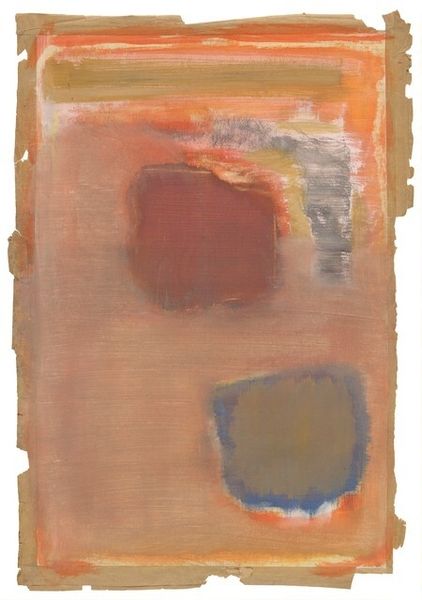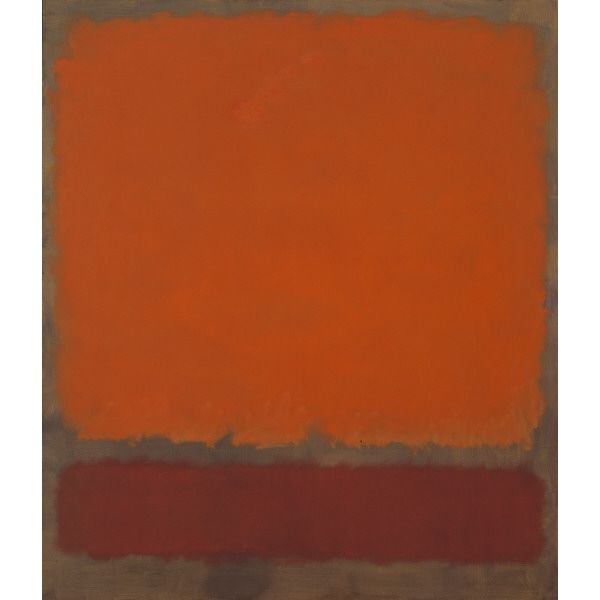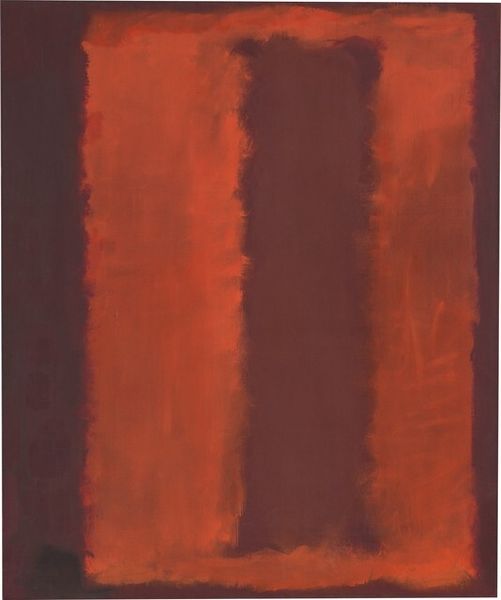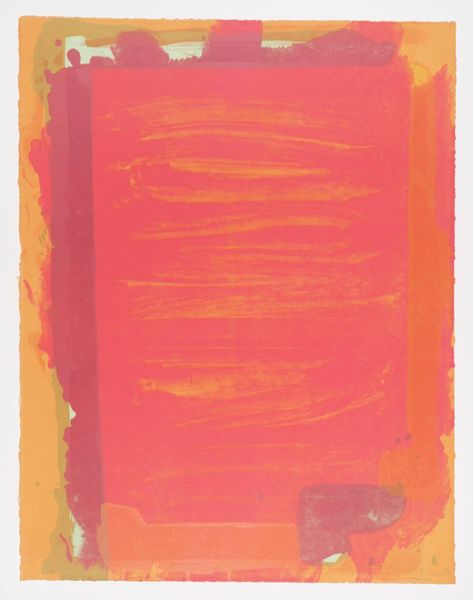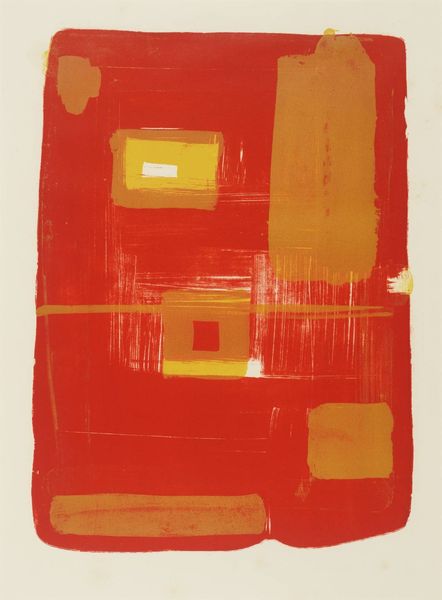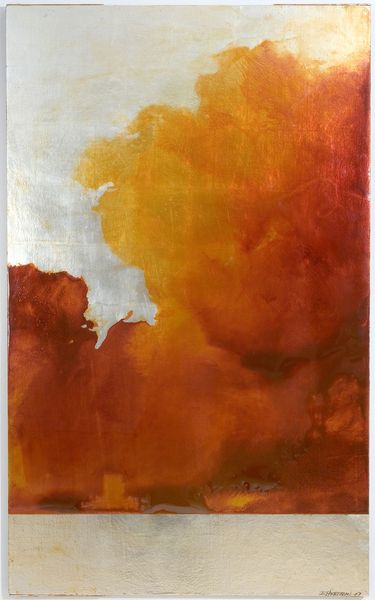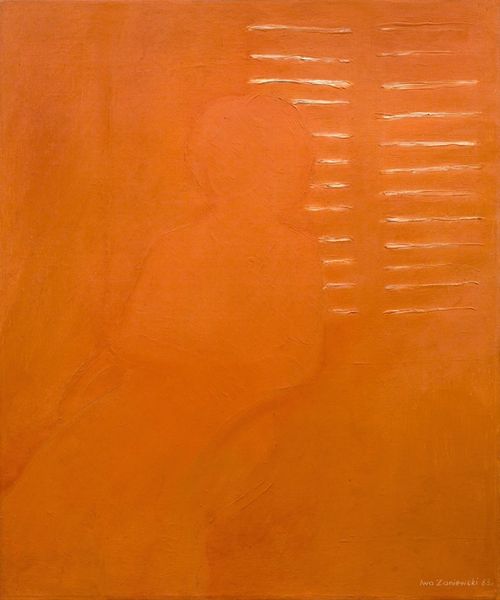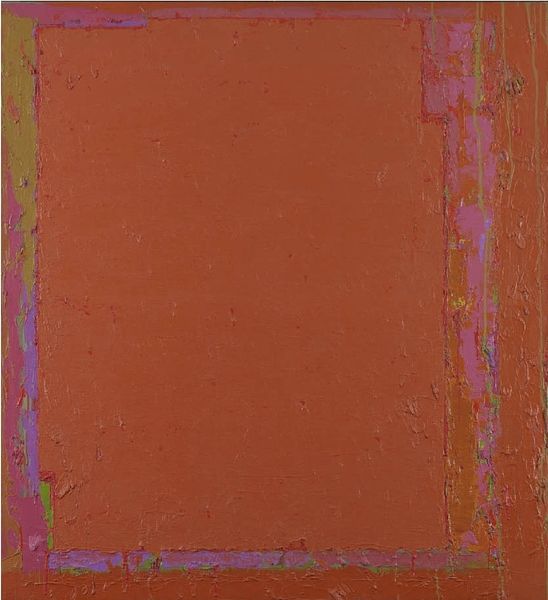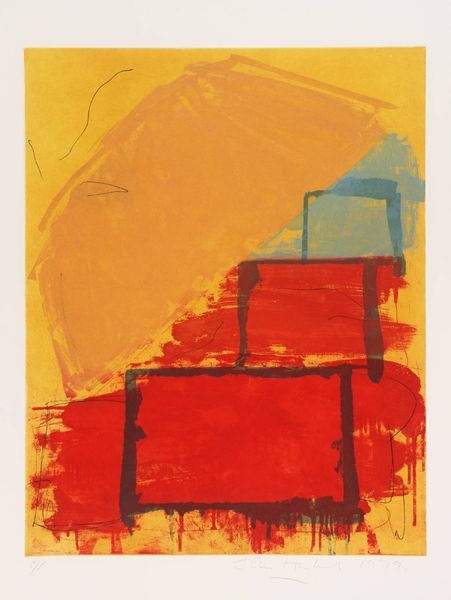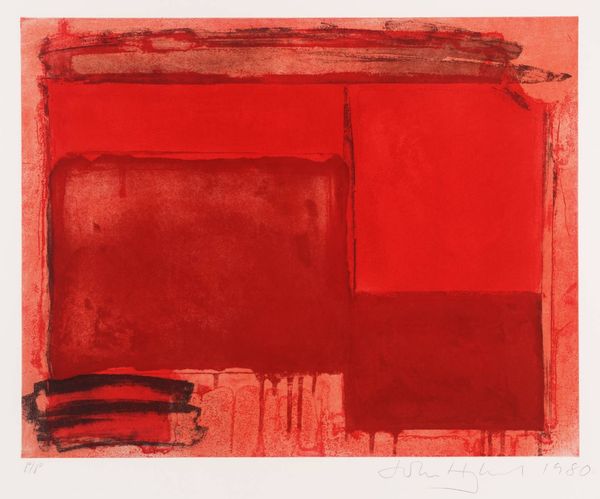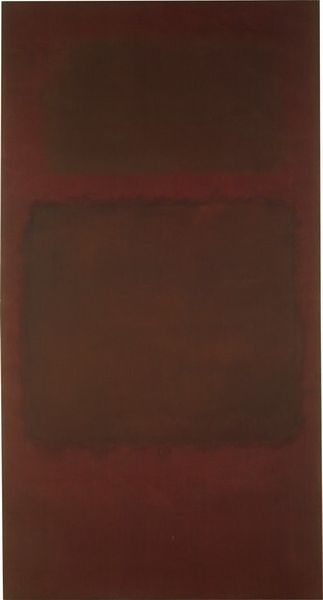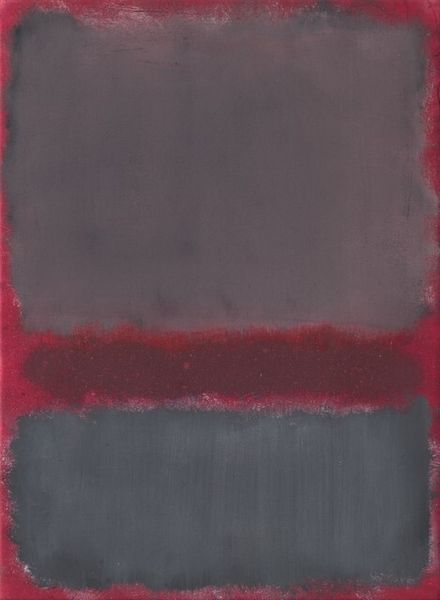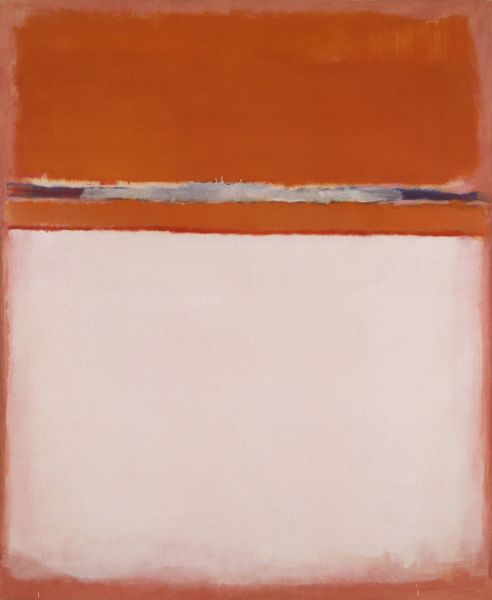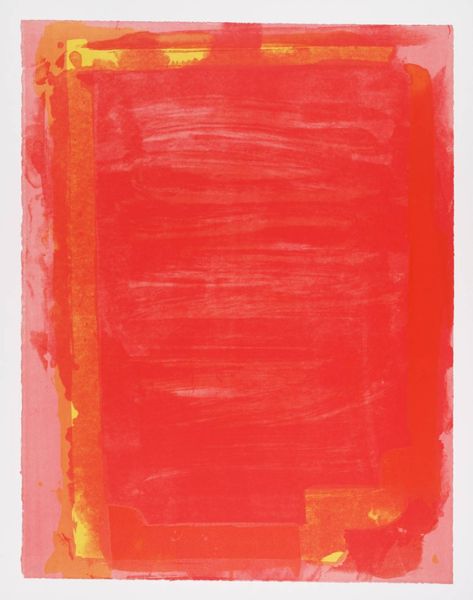
Copyright: Mark Rothko,Fair Use
Editor: We're looking at Mark Rothko's "No. 24" from 1949, an oil on canvas work. There’s a striking contrast between the large, somewhat somber green rectangle and the surrounding hazy oranges. It feels… unbalanced. What do you make of this piece? Curator: The apparent imbalance is key. Rothko, and the Abstract Expressionists in general, grappled with conveying emotional truths in the post-war period. Consider the context: anxieties surrounding the Cold War, the aftermath of unprecedented destruction, the crisis of meaning. How could traditional artistic forms express such profound disruption? Editor: So, the abstraction reflects the disruption? Curator: Precisely. Think of museums as cultural arbiters during this period. Institutions initially resisted Abstract Expressionism, deeming it non-representational and, therefore, not ‘art’ in a conventional sense. But figures like Peggy Guggenheim and Clement Greenberg championed these artists, changing the public's perception and, significantly, museum collecting habits. Editor: That's fascinating! So, the shift wasn't just artistic; it was institutional, too. I suppose I hadn't considered the museums as active participants in deciding what gets considered important. Curator: Exactly. Furthermore, note how Rothko uses color not just as hue but as a force. The orange isn’t merely “orange”; it feels like suppressed energy trying to break through the weight of the green. Editor: I do see that. Looking at it knowing that makes me consider museums' power now to include diverse art! Curator: Indeed, art history isn’t just about the art itself; it’s about the entire network of people and places that create and shape its meaning. A dynamic relationship!
Comments
No comments
Be the first to comment and join the conversation on the ultimate creative platform.
